How does a Bosch dishwasher work?
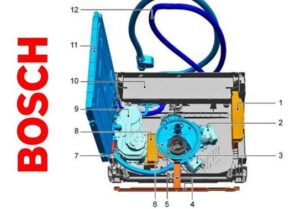 Modern dishwashers are not always easy to understand immediately after purchase, because even if the device vaguely resembles a washing machine, there are still many more differences in it. To understand how to use the equipment correctly, it is advisable to have a good knowledge of the internal structure of the Bosch dishwasher. This will allow you not only to use your “home assistant” more thoughtfully, but also, in the event of a breakdown, to find the cause of the failure with your own hands and eliminate it. In the article we will analyze in detail what the PMM consists of, what is in conventional models and what is in more advanced ones, as well as exactly how the device washes dishes.
Modern dishwashers are not always easy to understand immediately after purchase, because even if the device vaguely resembles a washing machine, there are still many more differences in it. To understand how to use the equipment correctly, it is advisable to have a good knowledge of the internal structure of the Bosch dishwasher. This will allow you not only to use your “home assistant” more thoughtfully, but also, in the event of a breakdown, to find the cause of the failure with your own hands and eliminate it. In the article we will analyze in detail what the PMM consists of, what is in conventional models and what is in more advanced ones, as well as exactly how the device washes dishes.
What's inside a Bosch dishwasher?
To understand what elements are hidden under the body of the dishwasher, you only need to partially disassemble the machine, remove the body and tray. This way you can see the key components of the unit.
- A circulation pump that supplies water to the sprinklers inside the washing chamber.
- An instantaneous water heater installed next to the circulation pump to heat cold tap water.
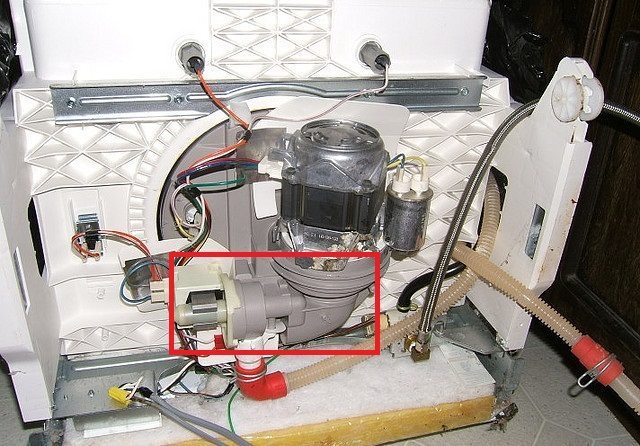
- A drainage pump that allows waste liquid to be drained into the sewer.
- Drain sleeve, as well as pipes.
- Filling sleeve with a leakage protection mechanism.
- A coarse filter installed at the inlet of the filler hose to block the entry of rust and other contaminants from low-quality tap water into the “home assistant”.
- A level sensor that allows you to accurately determine the amount of water in the dishwasher.
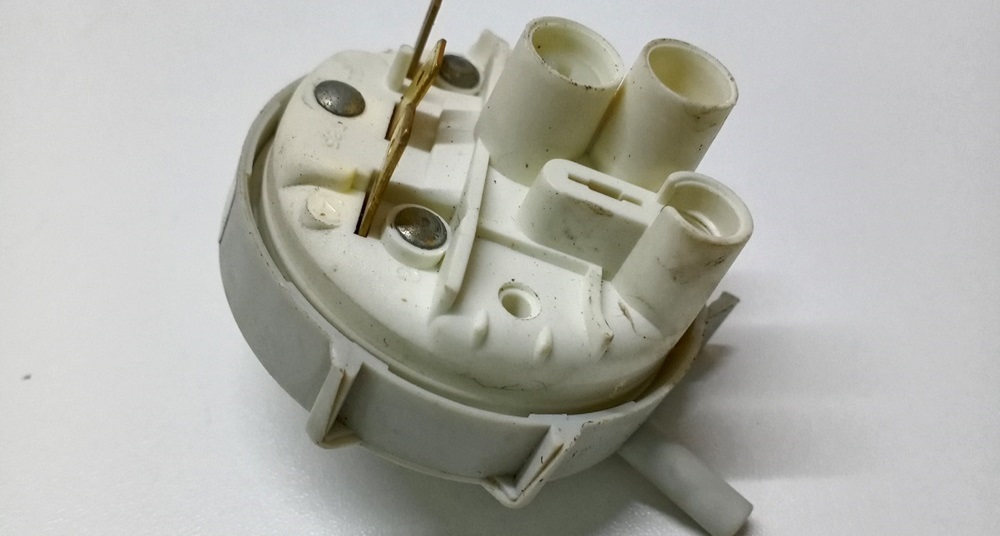
- Water intake.
- Ion exchanger, a resin device that helps soften hard tap water.
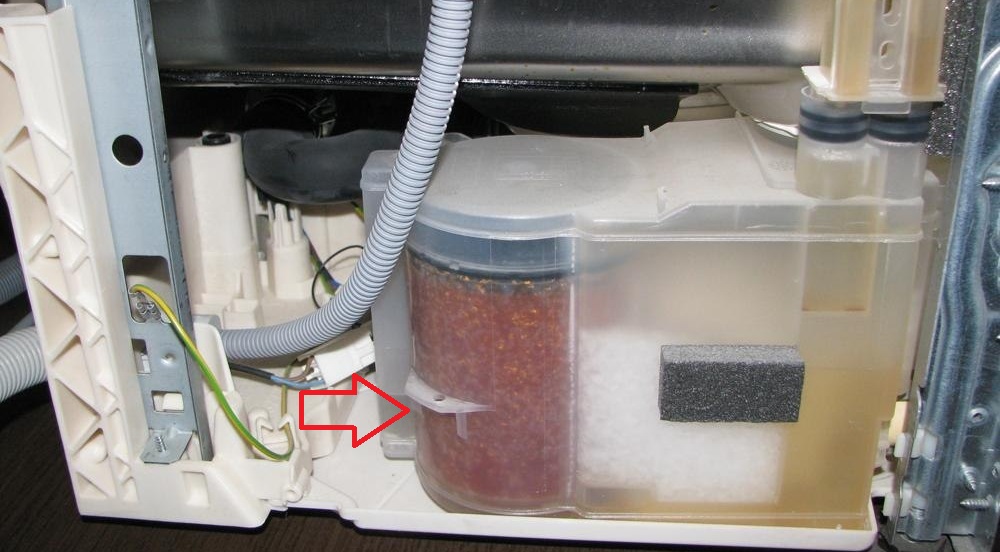
- The PMM control module is the “brain” of the entire system, which transmits signals to all other components of the dishwasher.
- Hoses, clamps and wiring.
- Noise insulation.
Then you can move on to the washing chamber of household appliances. In its “depths” you can see the following elements:
- washing chamber made of stainless steel;
- upper and lower sprinklers;
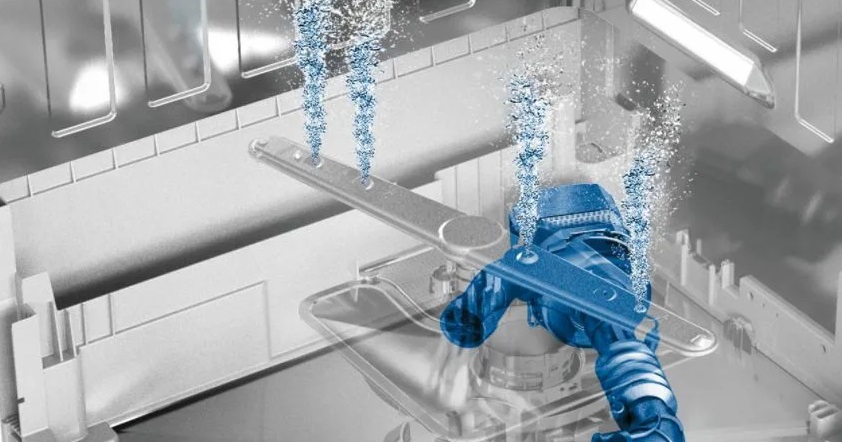
- baskets for dishes, plus a small tray for cutlery;
- a filter element that looks like a glass with a small mesh, placed at the bottom of the washing chamber and covered with another fine mesh;

- bunker for special salt;
- dispenser for household chemicals installed on the door;
- rubber cuff along the entire contour of the tank;
- machine control panel.
These are the main components without which no dishwasher can function. In the next section we will look at auxiliary elements that are often installed in premium dishwashers.
Additional structural elements
Let's study the auxiliary parts that can be placed in more expensive models of “home assistants”. If you purchased one of these, you can find many interesting details inside.
- Heat exchanger, a wide plastic tank filled with cold water, located near the metal PMM tank. It allows you to dry dishes more efficiently without wasting energy.

- A fan and another heating element, which are installed in household appliances to organize accelerated drying.
Previously, in Russia it was very difficult to find Bosch dishwashers with turbo drying, but with the “advent” of parallel imports, this has become much easier.
- A sensor for determining the purity of water, which helps the machine automatically select the operating cycle, temperature, amount of liquid, and the amount of detergent for washing.
- A sensor for determining the amount of salt, rinse aid and capsules 3 in 1, which will remind the housewife when it’s time to add household chemicals.
- Drying sensor, a smart technology that determines the ambient temperature in the room, based on which it chooses exactly how to dry the dishes.
- A special reservoir with the mineral necessary for effective drying. Zeolite is able to absorb moisture and release dry heat necessary for drying.
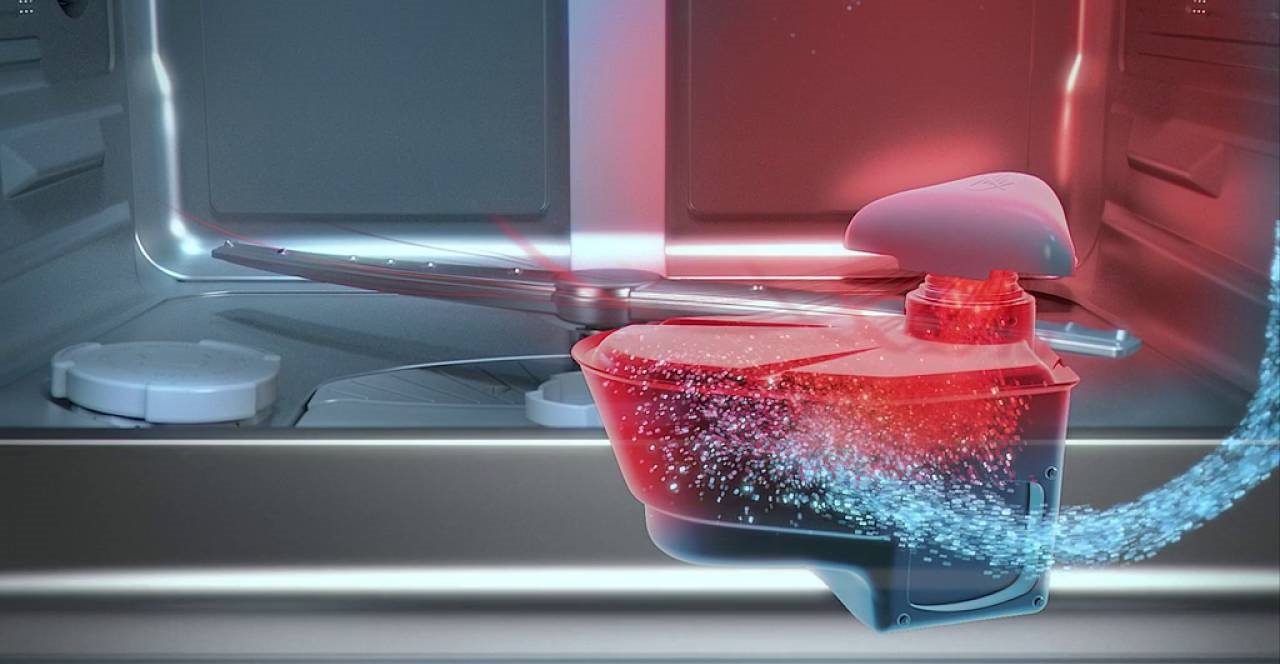
- A sensor for determining the hardness of tap water, allowing the dishwasher to select the correct operating cycle taking into account the quality of the liquid.
- A remaining time sensor with a projector, which prompts the user about the end of the program, about the progress of the wash, and also shows the remaining time directly on the floor using a projection, is found in the most expensive models of Bosch dishwashers.
- A separate holder for glasses, as well as a sprayer for cleaning baking sheets, convenient elements that sometimes come with the machine, sometimes you can buy them in addition, and sometimes they are simply not provided for a specific PMM model.
It is also worth highlighting that “home assistants” differ from each other not only in the presence of auxiliary functions. The main differences also lie in the size of the machines, which can be small, narrow and large, in the design of baskets for dishes, as well as in the number of sprinklers, which can be 2 or 3, plus they can be made of different metals. Baskets can be installed at different heights and have folding elements.Household appliances themselves also often differ in software and additional capabilities of the smart home system.
Interaction of the internal elements of the dishwasher
We have figured out the structure of Bosch dishwashers, all that remains is to study the classic operating cycle, which affects all internal components of household appliances. The first stage is loading dirty dishes into baskets, after which you need to slam the door of the washing chamber, select a mode and start working. Next, the equipment will begin to draw cold water through the filling hose and valve. Next, the water will penetrate the ion exchanger, where sodium ions and resin will soften hard water, which will then flow into the water collector installed at the bottom of the PMM.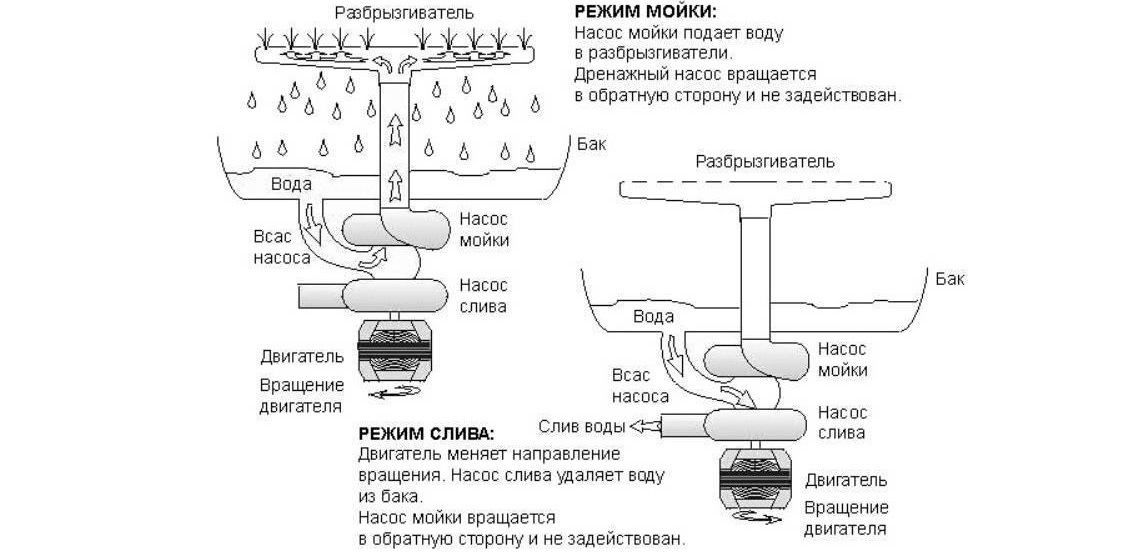
When the last stage is completed, the water level sensor will detect the current liquid level, and then the pressure switch will operate. The water supply valve will close, and the collected liquid will begin to heat the heating element. When the liquid reaches the user-selected temperature, the main pump is activated, which directs water to the spray arms, which begin to rotate, spraying water throughout the wash chamber.
Try to buy dishwashers with rocker arms that have many holes, and the spray arms themselves are installed at different angles to cover the entire washing chamber.
Water enters the washing chamber, flows down the walls to the very bottom, and then through the filter again penetrates into the reservoir in order to be reused. At this time, the liquid takes household chemicals from the dispenser and is again sprayed through the rocker nozzles. After washing, the drain pump is activated, which pumps out the waste liquid and drains it into the sewer.The circulation pump then draws in clean water for cold rinsing.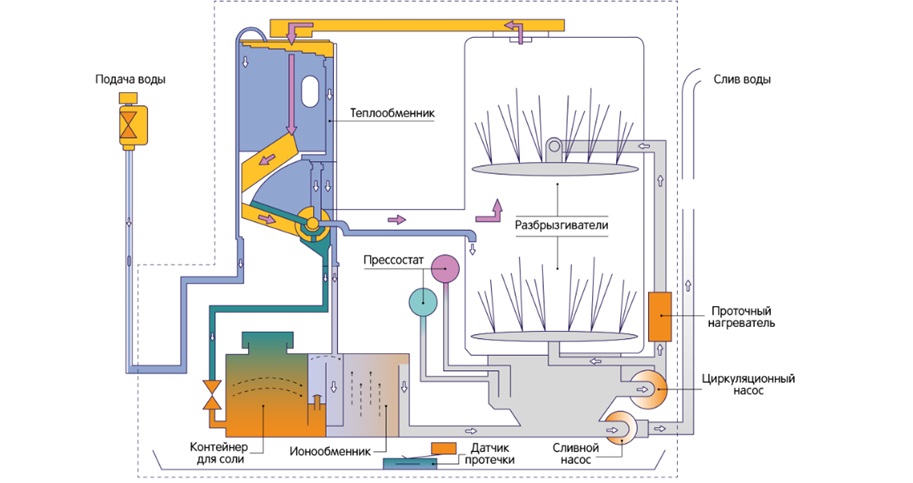
Then the pump once again draws water for the final rinse, but with warm water in which the rinse aid will be mixed. When this cycle is complete, the dishwasher will drain all the water and begin drying, either naturally through condensation or using hot air. When the working cycle is completed, the machine will notify you with a loud sound signal so that the user does not miss the moment. On average, washing can take from 30 to 180 minutes, depending on the selected settings.
Interesting:
Reader comments
- Share your opinion - leave a comment
Categories
Washing machine repair


For buyers

For users

Dishwasher



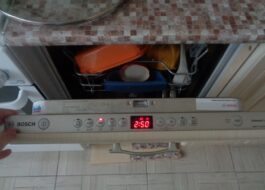













Add a comment